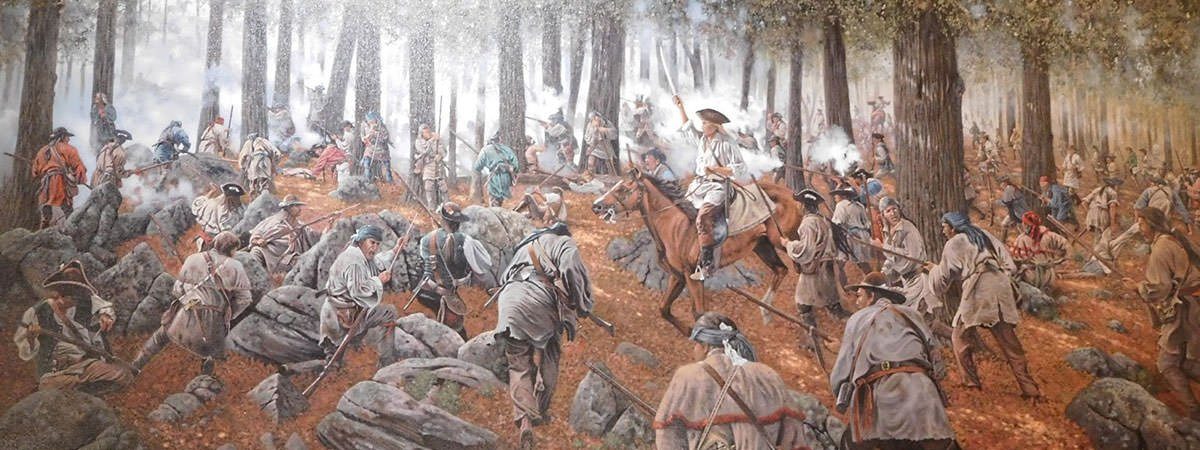The American Revolutionary War was a conflict between Great Britain and its thirteen colonies in North America which lasted for more than 8 years from April 19, 1775 to September 3, 1783. The people in the American colonies were themselves divided into two groups: the Patriots, who fought the British for independence; and the Loyalists who wanted a continuation of British rule. War began with the Battles of Lexington and Concord and the successive Siege of Boston in which the Americans forced the British to abandon Boston. The Britishers, being vastly more experienced in battle than the Americans, then inflicted a number of defeats on the Patriots leading many to think that the war would be won quickly by the British. However, surprise American victory at the Battle of Trenton hugely boosted the American morale. Though the British again surged ahead in the war with the capture of American capital Philadelphia, the Americans bounced back with victory at the Battles of Saratoga. The French formally joined the Americans after this tipping the balance of the war in their favor. The British finally came to the negotiation table after decisive Franco-American victory at the Siege of Yorktown. Know more about the American Revolutionary War through its 10 major battles.
#1 Battles of Lexington and Concord
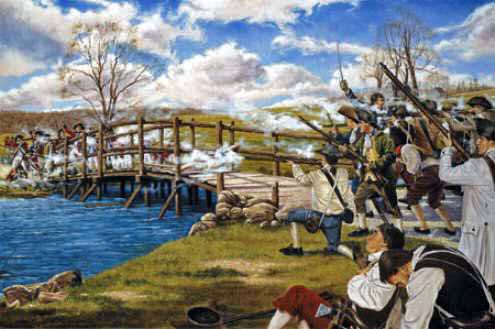
| Location: | Middlesex County, Massachusetts |
| Date: | April 19, 1775 |
The Battles of Lexington and Concord remain highly significant historic events for being the first military engagements of the American Revolutionary War. A British force under Lieutenant Colonel Francis Smith was sent to seize the weapons held by the Patriots at Concord, some 15 miles from Boston. However, as the Patriots were aware of the British plan, they had moved the supplies out of town. First shots were fired at a brief skirmish at Lexington, en route to Concord. Then, a British company of around 100 men became engaged in battle with around 400 American patriots at Concord’s North Bridge. The outnumbered British soldiers withdrew to rejoin the main force. After seizing a few remaining weapons, on their march back to Boston, the British were fired upon continuously from hidden positions by Americans. Smith’s men were finally rescued by reinforcements. During the course of the battles, the British suffered 273 casualties to America’s 95; and thus it is considered a success for the Americans. The Battles of Lexington and Concord were followed by the Siege of Boston which, after 11 months, forced the British to abandon Boston and sail to Nova Scotia.
#2 Battle of Long Island
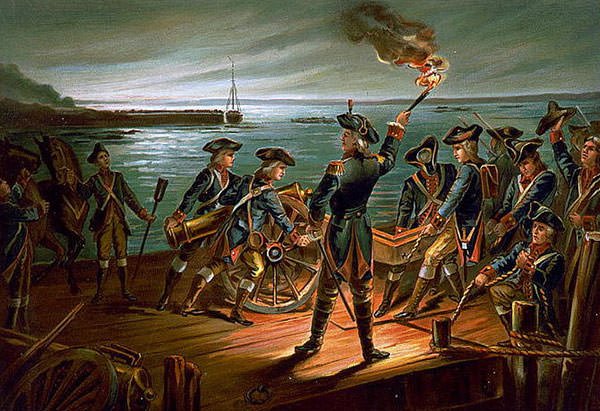
| Location: | Brooklyn, Long Island, New York |
| Date: | August 27, 1776 |
After the British were forced to leave Boston, General George Washington, commander-in-chief of the Continental Army, brought his men to defend the port city of New York. Holding New York was important as the city’s harbor could provide an excellent base for the British Royal Navy. On August 22, a British force of almost 30,000 landed on the south beaches of Long Island. They attacked on August 27 successfully defeating the 10,000 American troops and forcing them to retreat to the main defenses on Brooklyn Heights. British General William Howe then prepared for a siege as be believed that the Americans were trapped with his troops blocking escape by land and the Royal Navy preventing escape by sea. However, taking advantage of a storm, Washington evacuated his entire army to Manhattan without the loss of supplies or a single life. He thus prevented the surrender of his entire force, which would have spelled doom for America. American casualties in the battle were around 2,000 with 1,100 killed or wounded and 1,079 captured. British casualties were 64 killed, 293 wounded and 31 missing. Also known as the Battle of Brooklyn, this battle was the largest battle of the entire war in terms of troop deployment and combat. It was followed by a series of victories for the British which drove the Continental Army completely out of New York and to retreat through New Jersey and into Pennsylvania.
#3 Battle of Trenton
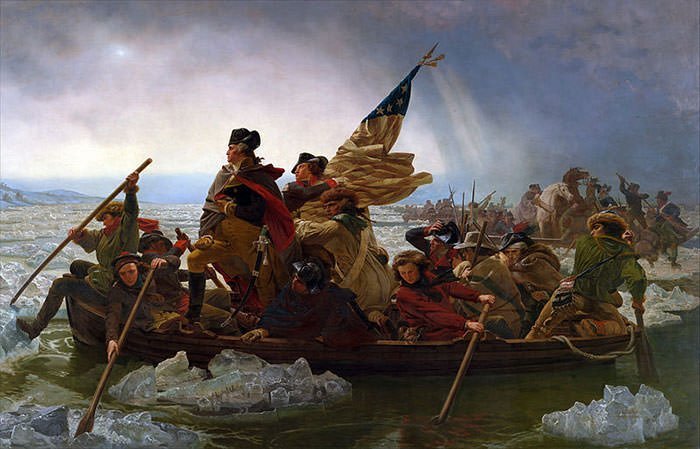
| Location: | Trenton, New Jersey |
| Date: | December 26, 1776 |
Prior to this battle, the British had handed the Americans a number of defeats forcing them to retreat through New Jersey and into Pennsylvania. The morale of the Continental Army was very low and many men had deserted. At such a juncture, George Washington laid out a bold plan to attack the enemy forces stationed at Trenton in New Jersey. The American forces first made the famous crossing of the Delaware River, which was accomplished “with almost infinite difficulty”. They then swiftly defeated the German missionaries at Trenton within an hour inflicting 100 casualties. The Americans only lost 2 men while 5 were wounded. More importantly, around 900 soldiers were captured along with provisions; and arms and ammunition. The American force then moved across the Delaware back into Pennsylvania with the captured soldiers and supplies. The dramatic American victory at Trenton significantly boosted the morale of the Continental Army; inspired rebels in the colonies; and led to new recruits joining the forces. Thus, though it was a small battle, the Battle of Trenton is regarded as a pivotal battle of the revolution.
#4 Battle of Brandywine
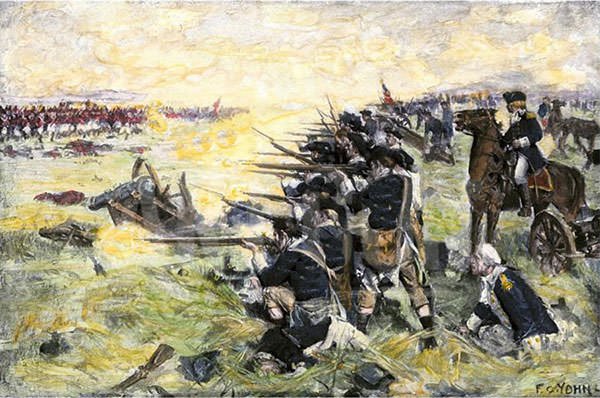
| Location: | Chadds Ford, Pennsylvania |
| Date: | September 11, 1777 |
After William Howe was unsuccessful to draw the Continental Army to a battle in northern New Jersey, he embarked on a campaign toward Philadelphia, then the American capital. The battle between 14,600 American soldiers and 15,500 British soldiers ultimately took place around the Brandywine Creek, a tributary of the Christina River. After a stiff fight, the British Army defeated the Patriots and forced them to retreat north at Germantown, Pennsylvania. The defeat left Philadelphia vulnerable. Instead of chasing the Continental army, the British captured the American capital two weeks later on September 26. The Continental Congress abandoned Philadelphia, moving first to Lancaster for one day and then to York in Pennsylvania. More troops fought at the Battle of Brandywine than in any other battle of the Revolutionary War. Moreover, it was also the longest single-day battle of the war, with continuous fighting for 11 hours. The battle cost the Americans more than 1,100 men, killed or captured, while the British lost approximately 600 men, killed or injured.
#5 Battles of Saratoga
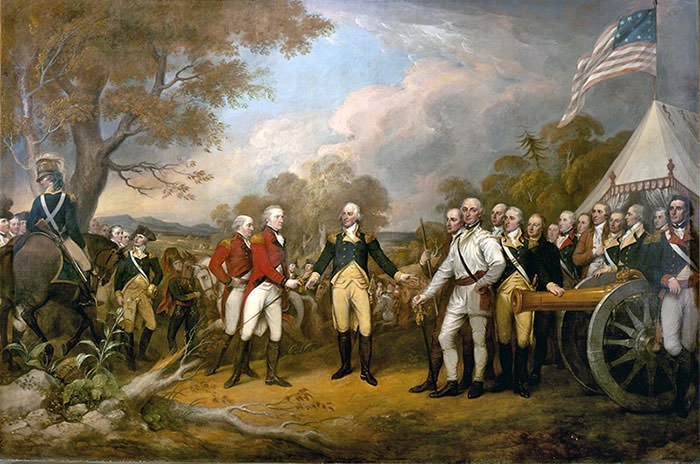
| Location: | Stillwater, Saratoga County, New York |
| Date: | September 19 & October 7, 1777 |
The region of New England was proving troublesome for the British and General John Burgoyne devised a strategy to isolate it from middle and southern colonies. His unit was to advance from Canada down the Hudson Valley to Albany; while Sir William Howe was to march up the Hudson Valley from New Jersey. However, though Howe was able to capture Philadelphia, he could not support Burgoyne. This British strategy culminated at the Battles of Saratoga. The first battle of Saratoga, known as Battle of Freeman’s Farm, was a minor success for Burgoyne as he occupied Freeman’s Farm. However, while Burgoyne’s army suffered nearly 600 casualties, American losses were about half of that. In the second battle of Saratoga, known as Battle of Bemis Heights, the American army convincingly defeated the British forces. The British suffered 500 casualties compared to 200 suffered by the Americans. Burgoyne was soon surrounded at Saratoga and, on October 17, he surrendered his entire army, numbering 5,800. The comprehensive victory gave France the confidence that America could win the war and this resulted in the formal Franco-American alliance in 1778. Due to this, the Battles of Saratoga are considered the turning point of the American Revolutionary War.
#6 Siege of Charleston
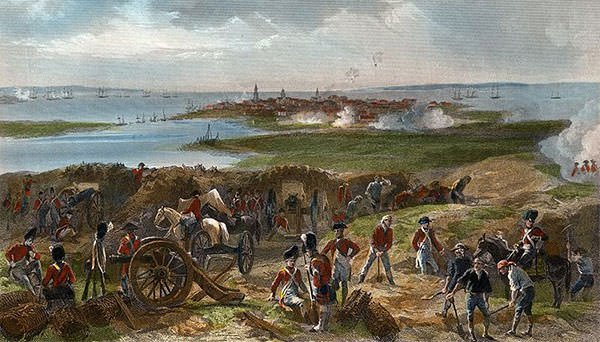
| Location: | Charleston, South Carolina |
| Date: | March 29, 1780 – May 12, 1780 |
The Northern strategy of the British had failed due to the Battles of Saratoga and they evacuated their troops from Philadelphia back to New York City in 1778 to strengthen the city’s defense against a possible Franco-American attack. The British now shifted their strategy to focus on the Southern theater hoping that the Loyalists would support them. The opening British move was the successful Capture of Savannah on December 29, 1778. Following that, their next target was Charleston and Major General Benjamin Lincoln was given the responsibility to defend it. British Commander-in-Chief Sir Henry Clinton cut off the city from relief and began the siege 800 yards from the American fortifications. After around one and a half months, Lincoln formally surrendered his forces to Clinton. The American losses stood at 89 killed, 138 wounded and 5,466 captured. In comparison the British only lost 76 men while 189 were wounded. The Siege of Charleston was one of the worst American defeats of the war and it was a serious blow to their cause. It remained the largest surrender of an American force under arms till 1862. After capturing Charleston, the British drove the remaining Continental Army troops from South Carolina by May 29, thus strengthening their hold in the South.
#7 Battle of Kings Mountain
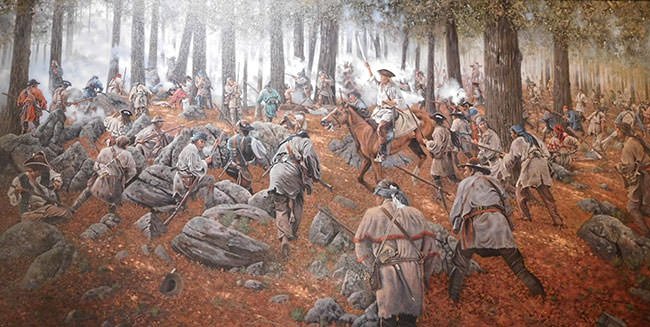
| Location: | Kings Mountain, South Carolina |
| Date: | October 7, 1780 |
After capturing Charleston, Henry Clinton returned to New York, leaving the command in the south to Lord Charles Cornwallis. After a series of victories against the Patriots, Cornwallis began to advance north into North Carolina. British Major Patrick Ferguson had arrived in North Carolina in early September 1780 where he recruited Loyalists for the British. Ferguson received news that the Patriots were planning to attack his men and he decided to retreat to where the main army of Cornwallis was. However, he was caught by surprise in the middle of his retreat by the Loyalists at Kings Mountain near the border with South Carolina. In a battle lasting for a little over an hour, the Patriots inflicted a crushing defeat on the Loyalist militia led by Ferguson. During the battle, Ferguson was fatally shot. Loyalist casualties were 290 killed, 163 wounded and 668 taken prisoner. Patriot casualties were 28 killed and 60 wounded. The conflict was perhaps “the war’s largest all-American fight”. The Battle of Kings Mountain is regarded as a pivotal moment in the Southern campaign. The decisive Patriot victory greatly increased their morale. Moreover, it forced Cornwallis to abandon his plan to invade North Carolina and, instead, he had to retreat back into South Carolina.
#8 Battle of Cowpens
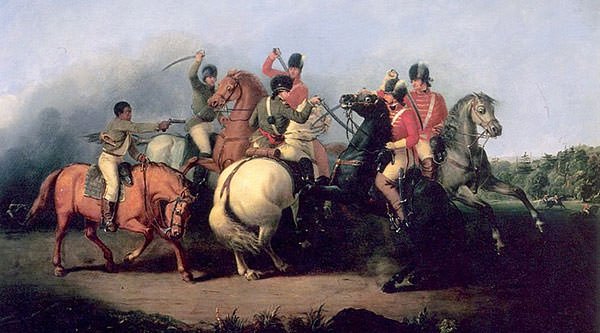
| Location: | Cherokee County, Cowpens, South Carolina |
| Date: | January 17, 1781 |
A unit of around 1,900 troops under American Brigadier General Daniel Morgan had been sent southwest of the Catawba River to cut supply lines and hamper British operations in the back-country. British General Lord Cornwallis sent Lieutenant Colonel Banastre Tarleton to counter this move of Major General Nathanael Greene, the commander of the Southern Campaign of the Patriots. Morgan prepared to meet the 1,100 men under Tarleton at a river at Cowpens, a pastureland in present-day Spartanburg County. In the resulting Battle of Cowpens, the American troops routed British forces inflicting heavy casualties and wiping out the brigade under Tarleton as an effective fighting force. The British casualties were 110 killed, 229 wounded and 629 captured or missing. In comparison the Americans casualties were only 25 killed and 124 wounded. The Battle of Cowpens is regarded as the turning point of the war in the South. Moreover, coupled with the American victory at the Battle of Kings Mountain, it led to the American reconquest of South Carolina from the British. In the words of future American Chief Justice John Marshall: “Seldom has a battle, in which greater numbers were not engaged, been so important in its consequences as that of Cowpens.”
#9 Battle of the Chesapeake
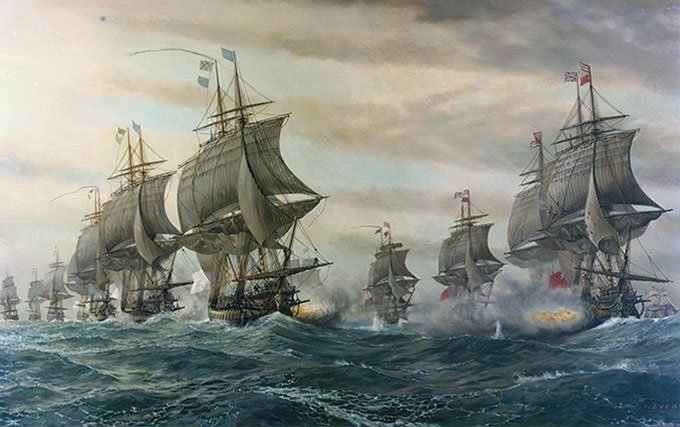
| Location: | off the Virginia Capes, Atlantic Ocean |
| Date: | September 5, 1781 |
French Rear Admiral Francois Joseph Paul, the Comte de Grasse, had the option of attacking the British either at New York or Virginia. Deciding Virginia as the location, he arrived at the Chesapeake Bay at the end of August, 1781. British Rear Admiral Sir Thomas Graves arrived with a fleet of 19 ships at the mouth of Chesapeake on September 5 only to find the fleet of Admiral de Grasse already at anchor in the bay. De Grasse hastily prepared most of his fleet for battle, 24 ships of the line, and sailed out to meet him. The resultant Battle of the Chesapeake lasted for two hours. The two fleets didn’t meet completely with only their forward and center sections being completely engaged. The French fleet was victories in the battle. 2 French ships were damaged as compared to 5 of the British. The French suffered 220 casualties while the British suffered more than 300. The Battle of the Chesapeake proved to be the most strategically important naval battle of the Revolutionary War. It ensured that the besieged forces of Lord Cornwallis at Yorktown, Virginia could not be reinforced or evacuated by the British navy. This, in turn, led to the decisive British surrender at Yorktown.
#10 Siege of Yorktown
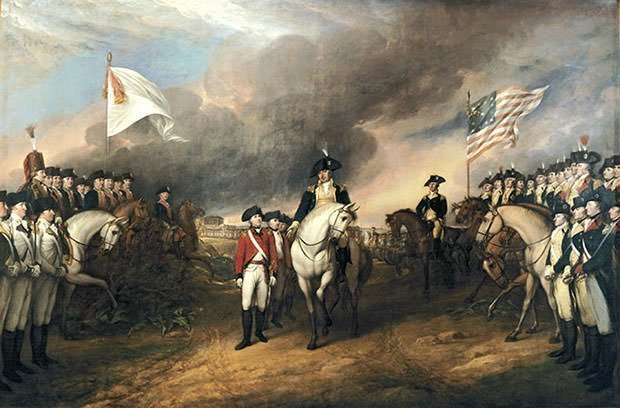
| Location: | Yorktown, Virginia |
| Date: | September 28 – October 19, 1781 |
On July 6, 1781, the American army and their French allies met near New York City. On August 19, 3000 American soldiers under George Washington and 4000 French soldiers under General Comte de Rochambeau marched from Newport, Rhode Island, to Yorktown, Virginia. During this much celebrated march, Washington send out fake dispatches to make the British Commander-in-Chief, Henry Clinton, believe that his army was going to attack New York. This convinced Clinton that Lord Cornwallis in Yorktown was not in any danger. On September 28, Washington completed encircled Yorktown beginning the siege against a contingent of 9,000 British troops. After non-stop bombardment from Franco-American forces, no hope of reinforcements and inadequate supplies of artillery ammunition and food, Cornwallis showed the white flag on October 17. The siege lasted for 20 days. Franco-American casualties were 88 killed and 301 wounded. The British lost 156 men while 326 were wounded and 70 missing. More importantly, Cornwallis had to surrender his entire remaining force of more than 7,000. The Siege of Yorktown was the last major battle of the American Revolutionary War. It forced the British to negotiate an end to the conflict. In 1782, peace negotiations began and on September 3, 1783, United States was recognized as a free and independent nation after signing of the Treaty of Paris.

